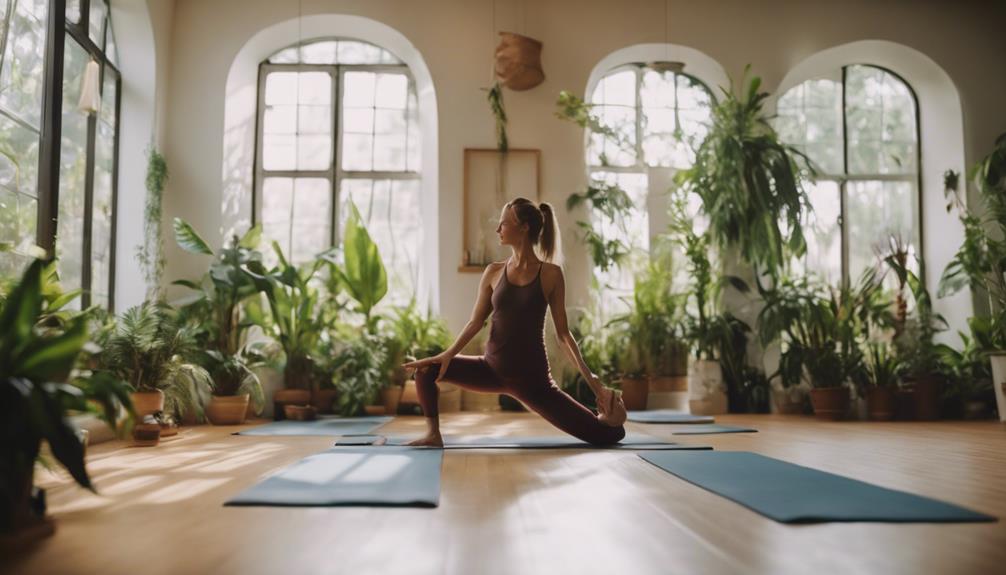How Good Is Yoga

Yoga has become a global phenomenon, attracting millions of enthusiasts seeking physical fitness, mental clarity, and spiritual growth. But how good is yoga really? In this blog post, we delve into the myriad benefits of yoga, its impact on health and wellness, and why incorporating this ancient practice into your daily routine can be life-changing.
The Historical Roots of Yoga
To truly understand how good yoga is, it is essential to explore its historical context. Originating in ancient India over 5,000 years ago, yoga encompasses physical postures (asanas), breathing techniques (pranayama), and meditation. Traditionally, it was practiced to achieve spiritual enlightenment and self-realization. Today, while many people engage in yoga primarily for its physical benefits, the holistic approach that combines mind, body, and spirit remains a fundamental aspect. This ancient practice has stood the test of time, evolving into various styles like Hatha, Vinyasa, and Ashtanga, each offering unique benefits that cater to different needs and preferences.
Physical Benefits of Yoga: Strength, Flexibility, and Balance
One of the most recognized benefits of yoga is its ability to enhance physical fitness. Regular practice improves strength, flexibility, and balance. Yoga postures engage multiple muscle groups, promoting muscle tone and endurance. Many practitioners find that their flexibility increases significantly with consistent practice, which can alleviate tightness and tension in the body. Additionally, yoga helps develop balance, which is particularly important as we age. Studies have shown that incorporating yoga into a fitness routine can lead to fewer injuries, better posture, and improved overall physical performance.
Mental Health Benefits: Stress Reduction and Emotional Wellness
How good is yoga for mental health? The answer lies in its profound ability to reduce stress and promote emotional well-being. Yoga encourages mindfulness, which helps practitioners become more aware of their thoughts and emotions. This awareness can lead to reduced anxiety and depression levels. Research indicates that yoga can lower cortisol levels, the hormone associated with stress, and enhance overall mood. Furthermore, the combination of breathing exercises and meditation practiced in yoga fosters a sense of calm and tranquility, making it an effective tool for managing daily stressors and fostering emotional resilience.
Yoga’s Role in Enhancing Mindfulness and Concentration
In our fast-paced world, cultivating mindfulness is more important than ever. Yoga serves as a powerful practice for enhancing concentration and focus. Through the integration of breath control and meditation, practitioners learn to remain present in the moment, which can be beneficial in various aspects of life. Improved concentration not only aids in physical postures but also translates into heightened productivity and creativity in daily tasks. By making mindfulness an integral part of your routine through yoga, you can enjoy clearer thinking and better decision-making.
The Spiritual Dimension of Yoga: Connection and Inner Peace
For many, the question of how good yoga is extends beyond physical and mental benefits; it touches upon the spiritual realm. Yoga encourages self-discovery and fosters a deeper connection with oneself and the universe. This spiritual aspect can lead to greater inner peace and a sense of purpose. Many yoga practitioners report feeling more in tune with their emotions and more compassionate toward others. The meditative elements of yoga invite individuals to explore their inner selves, paving the way for personal growth and self-acceptance.
Yoga for All Ages: A Versatile Practice for Everyone
One of the most appealing aspects of yoga is its versatility. How good is yoga for different age groups? The beauty of yoga lies in its accessibility; it can be practiced by individuals of all ages and fitness levels. From children to seniors, there are tailored yoga classes designed to meet specific needs. For instance, gentle yoga styles are ideal for seniors looking to maintain mobility and balance, while more vigorous styles can engage younger audiences seeking physical challenges. This inclusivity highlights yoga’s ability to cater to diverse populations, making it a suitable practice for everyone.
Integrating Yoga into Your Daily Routine: Tips for Beginners
If you’re wondering how good yoga can be for you personally, consider integrating it into your daily routine. For beginners, starting a yoga practice may feel daunting, but it is easier than you might think. Begin with just a few minutes each day, focusing on basic postures and breathing techniques. Utilize online resources or local classes to gain guidance and support. Setting aside dedicated time for yoga, whether in the morning or evening, can help establish a consistent practice. Remember, the key is to listen to your body and progress at your own pace, allowing the benefits of yoga to unfold naturally over time.
The Future of Yoga: Trends and Innovations
As yoga continues to grow in popularity, it evolves with new trends and innovations. From online classes to workshops focusing on specialized areas like trauma-informed yoga, the future of this practice looks bright. How good is yoga in terms of its adaptability? The incorporation of technology into yoga allows practitioners to access a wealth of resources from the comfort of their homes. Additionally, the rise of community-focused classes fosters connection and support among practitioners. As we move forward, yoga will likely continue to adapt, thriving as a holistic approach to health and wellness in our ever-changing world.
In conclusion, how good is yoga? The evidence speaks for itself, showcasing the extensive benefits of this transformative practice. Whether you seek physical fitness, mental clarity, emotional balance, or spiritual growth, yoga has something to offer everyone. By embracing yoga as part of your lifestyle, you can unlock a healthier, more harmonious existence—one breath at a time.Yoga Workshop